 Search by Keyword
|
"HER MAJESTY"
(John Lennon – Paul McCartney)
The standard length for a Beatles song throughout the first half of their career was between two and three minutes. George Martin would concern himself with extending or reducing every Lennon / McCartney studio recording to fit within these parameters, knowing that each Beatles recording had great potential for radio airplay. These parameters were set by radio programmers at the time, and The Beatles' producer knew his clients' recordings needed to conform or else they wouldn't be played.
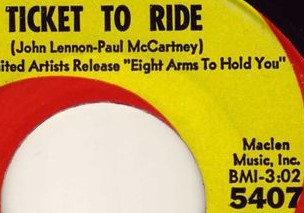 With this standard set, only occasionally did any Beatles track extend past the three minute mark throughout the first half of their career, which lasted until the end of 1966. One exception was the “Rubber Soul” track “You Won't See Me,” which somehow managed to push the envelope to a scandalous 3:19. As far as singles were concerned, their 1965 hit “Ticket To Ride” clocked in at 3:02, the thinking undoubtedly being that the disc jockey could easily cut off a couple seconds of the fade-out if need be. With this standard set, only occasionally did any Beatles track extend past the three minute mark throughout the first half of their career, which lasted until the end of 1966. One exception was the “Rubber Soul” track “You Won't See Me,” which somehow managed to push the envelope to a scandalous 3:19. As far as singles were concerned, their 1965 hit “Ticket To Ride” clocked in at 3:02, the thinking undoubtedly being that the disc jockey could easily cut off a couple seconds of the fade-out if need be.
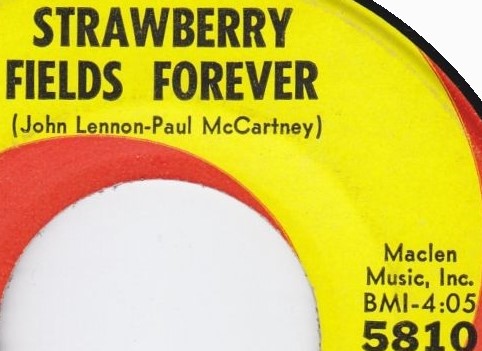 When 1967 came around, however, the constraints of conformity were pushed aside in favor of artistic expression. Album tracks such as “A Day In The Life” or “Within You Without You” could not be contained within a three minute limit, nor could singles such as “Strawberry Fields Forever” or “All You Need Is Love,” both of which hovered around the four minute mark. By 1968, all hell broke loose when a seven-minute “Hey Jude” hit the airwaves. Radio programmers now had to conform to The Beatles, as well as other artists, instead of the other way around! When 1967 came around, however, the constraints of conformity were pushed aside in favor of artistic expression. Album tracks such as “A Day In The Life” or “Within You Without You” could not be contained within a three minute limit, nor could singles such as “Strawberry Fields Forever” or “All You Need Is Love,” both of which hovered around the four minute mark. By 1968, all hell broke loose when a seven-minute “Hey Jude” hit the airwaves. Radio programmers now had to conform to The Beatles, as well as other artists, instead of the other way around!
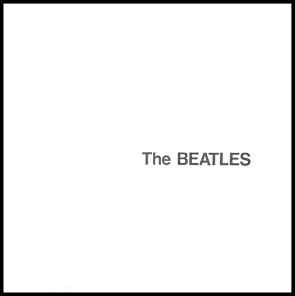 While the trend appeared to move in the direction of “longer is better,” the opposite also proved to be true. Certain Beatles songs appeared that were shorter than expected. The “White Album” had a track entitled “Wild Honey Pie” that totaled 1:02, while song snippets were pieced together on the “Abbey Road” album that also clocked in at just over the minute mark. While the trend appeared to move in the direction of “longer is better,” the opposite also proved to be true. Certain Beatles songs appeared that were shorter than expected. The “White Album” had a track entitled “Wild Honey Pie” that totaled 1:02, while song snippets were pieced together on the “Abbey Road” album that also clocked in at just over the minute mark.
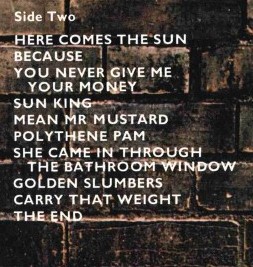 However, there was a hidden track that was tacked on to the end of that album that was shorter than anything else The Beatles ever released. After fourteen seconds of silence at the end of side two, just before the needle went into the run-out groove of the album, an unnamed twenty-three second song appeared. Neither the record label nor the album cover documented what it was. It was decided, because of multiple inquiries, to credit the song on subsequent pressings. It was only then that the title of the shortest Beatles song ever recorded was revealed to the world, this being Paul's humorous acoustic guitar track “Her Majesty.” However, there was a hidden track that was tacked on to the end of that album that was shorter than anything else The Beatles ever released. After fourteen seconds of silence at the end of side two, just before the needle went into the run-out groove of the album, an unnamed twenty-three second song appeared. Neither the record label nor the album cover documented what it was. It was decided, because of multiple inquiries, to credit the song on subsequent pressings. It was only then that the title of the shortest Beatles song ever recorded was revealed to the world, this being Paul's humorous acoustic guitar track “Her Majesty.”
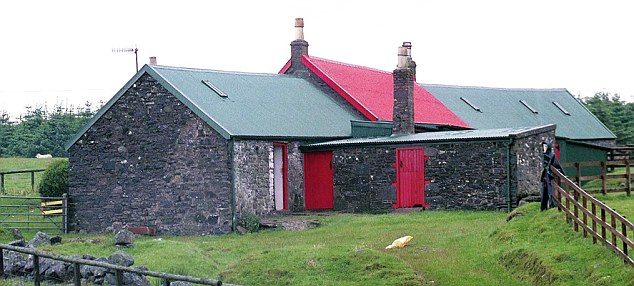
Paul McCartney's "Mull Of Kinytre" home in Scotland.
Songwriting History
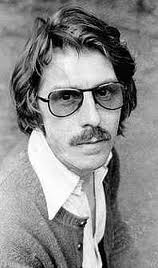 Paul's book "Many Years From Now" specified that "Her Majesty" was written by Paul while he was staying at his "Mull Of Kintyre" home in southwest Scotland. He states: "It was quite funny because it's basically monarchist, with a mildly disrespectful tone, but it's very tongue in cheek. It's almost like a love song to the Queen." Beatles publicist Derek Taylor adds: "Paul sang that knowing the Queen would enjoy it. We are monarchists." Paul's book "Many Years From Now" specified that "Her Majesty" was written by Paul while he was staying at his "Mull Of Kintyre" home in southwest Scotland. He states: "It was quite funny because it's basically monarchist, with a mildly disrespectful tone, but it's very tongue in cheek. It's almost like a love song to the Queen." Beatles publicist Derek Taylor adds: "Paul sang that knowing the Queen would enjoy it. We are monarchists."
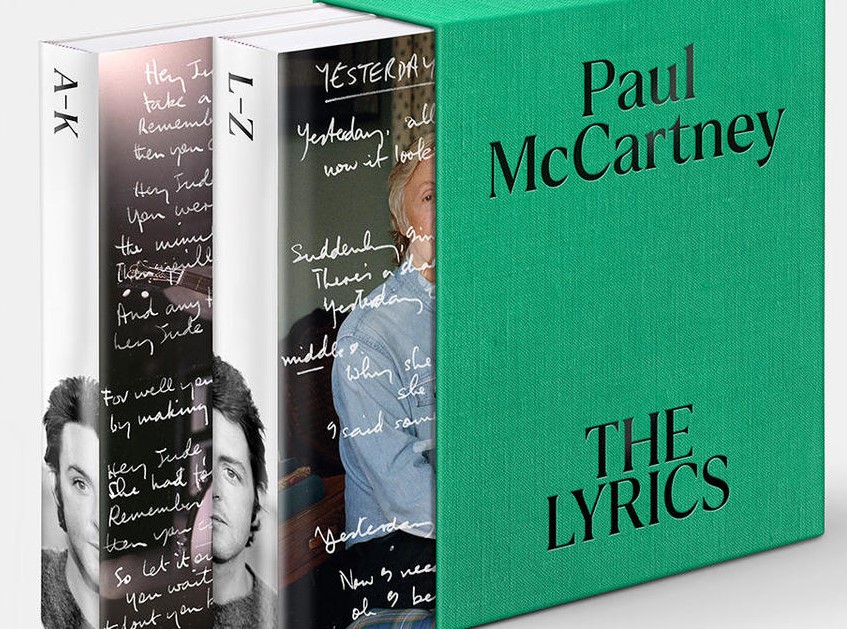 In his 2021 book "The Lyrics," Paul elaborates: "You're sitting around with an acoustic guitar, just for your own fun, and then you get a little idea, and sometimes it's enough to finish up a 'big' song. 'Her Majesty' was just a little fragment really, and I didn't know what to do with it. It's tongue-in-cheek, treating the queen as if she were just a nice girl and not bothering with the fact that she would become the longest-reigning monarch ever in the UK, or that she was queen of the nation. It's just geing cheeky. 'Her majesty's a pretty nice girl / but she doesn't have a lot to say' - that seemed to be true. She doesn't say much - only the annual Queen's Speech at Christmas and the opening of Parliament." In his 2021 book "The Lyrics," Paul elaborates: "You're sitting around with an acoustic guitar, just for your own fun, and then you get a little idea, and sometimes it's enough to finish up a 'big' song. 'Her Majesty' was just a little fragment really, and I didn't know what to do with it. It's tongue-in-cheek, treating the queen as if she were just a nice girl and not bothering with the fact that she would become the longest-reigning monarch ever in the UK, or that she was queen of the nation. It's just geing cheeky. 'Her majesty's a pretty nice girl / but she doesn't have a lot to say' - that seemed to be true. She doesn't say much - only the annual Queen's Speech at Christmas and the opening of Parliament."
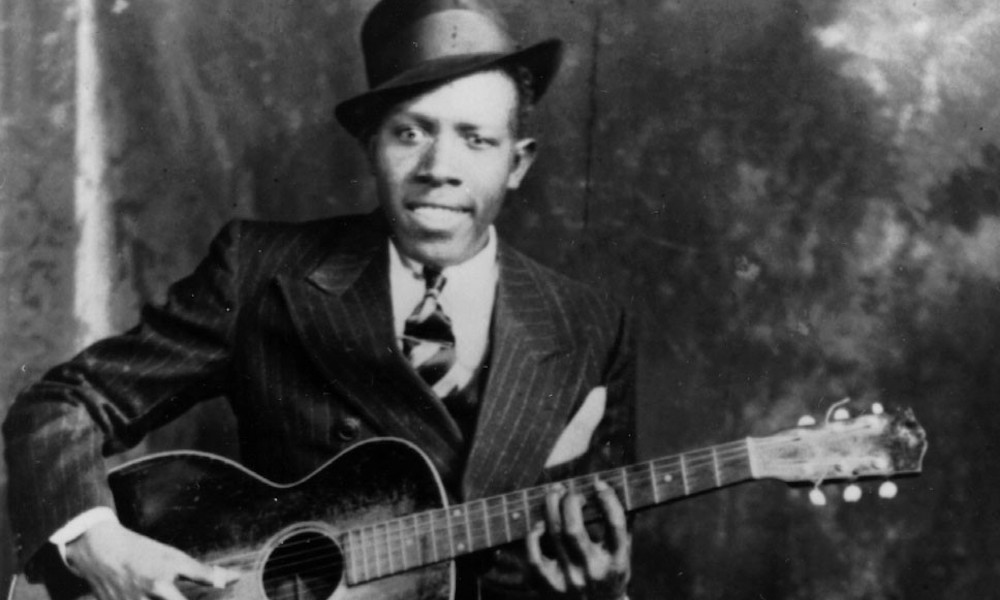 The melodic inspiration, structure and all, appears to date back to Ragtime Blues guitar legend Robert Johnson and his 1936 recording “They're Red Hot.” Although Paul has never indicated this song as his inspiration, the resemblance is uncanny and, at least subconsciously, it appears that he patterned “Her Majesty” after this classic track, or a similarly patterned blues song. His exposure to the music of the '20s and '30s through his father's influence makes this quite likely. The melodic inspiration, structure and all, appears to date back to Ragtime Blues guitar legend Robert Johnson and his 1936 recording “They're Red Hot.” Although Paul has never indicated this song as his inspiration, the resemblance is uncanny and, at least subconsciously, it appears that he patterned “Her Majesty” after this classic track, or a similarly patterned blues song. His exposure to the music of the '20s and '30s through his father's influence makes this quite likely.
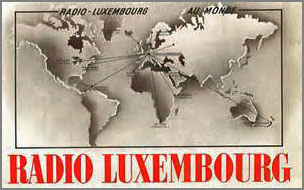 As to the time of writing, Radio Luxembourg disc jockey Tony Macarthur remembers: “When 'The Beatles' double album was released, at the time I did a program with Paul, and he played ('Her Majesty') to me at that time. In fact, it was on that ('White Album') tape, when we were just getting levels and things.” This being the case, “Her Majesty” had to have been written, with a demo already committed to tape, by November of 1968. As to the time of writing, Radio Luxembourg disc jockey Tony Macarthur remembers: “When 'The Beatles' double album was released, at the time I did a program with Paul, and he played ('Her Majesty') to me at that time. In fact, it was on that ('White Album') tape, when we were just getting levels and things.” This being the case, “Her Majesty” had to have been written, with a demo already committed to tape, by November of 1968.
John Lennon never claimed any credit for writing the song, instead replying when asked: “I think Paul did it again for this (album). We always have tons of bits and pieces lying around for years. I've still got stuff that I wrote around 'Pepper,' you know.”
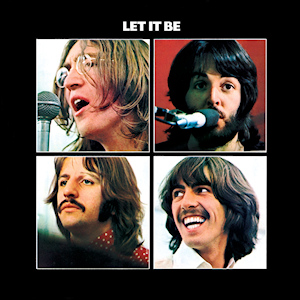 Since Paul did run it by the rest of the group during rehearsals for what became the “Let It Be” project in January of 1969, some say that he intended on writing more and extending the song lyrically with more verses. Paul himself sets the record straight, however, stating just after its release: “I only had a few lines, so I decided to make it just that long. No more." Since Paul did run it by the rest of the group during rehearsals for what became the “Let It Be” project in January of 1969, some say that he intended on writing more and extending the song lyrically with more verses. Paul himself sets the record straight, however, stating just after its release: “I only had a few lines, so I decided to make it just that long. No more."
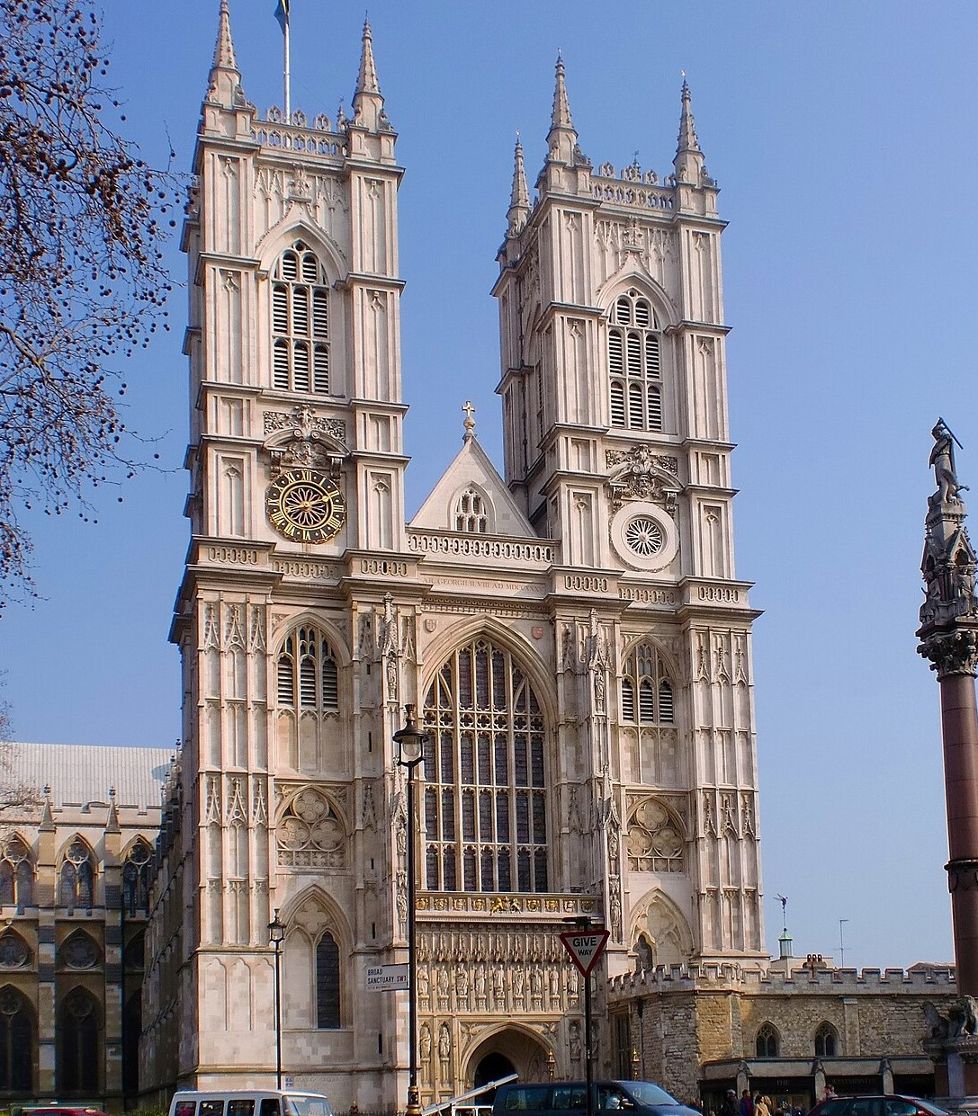 Kevin Howlett, in his "Track By Track" section of the 50th Anniversary "Abbey Road" release, outlines how Paul once before wrote about the Queen when he was ten years old. "As part of celebrations for the 1953 Coronation, he entered a Liverpool Public Libraries competition to write an essay looking forward to the pomp and circumstance at Westminster Abbey on 2 June. 'I obviously wrote something reasonable,' Paul stated. 'I won my age group's prize.' His winning entry was preserved in Speke Library in Liverpool." "Present day royalty rules with affection rather than force,' Paul wrote concerning "our lovely young Queen." His winnings were two-fold: the Geoffrey Tease book called "Seven Queens Of England" and a book token which he used to buy a modern art compendium. "It was fabulous," McCartney remembers. "Lots and lots of pictures by people like Victor Pasmore, Salvador Dali and Picasso.” Kevin Howlett, in his "Track By Track" section of the 50th Anniversary "Abbey Road" release, outlines how Paul once before wrote about the Queen when he was ten years old. "As part of celebrations for the 1953 Coronation, he entered a Liverpool Public Libraries competition to write an essay looking forward to the pomp and circumstance at Westminster Abbey on 2 June. 'I obviously wrote something reasonable,' Paul stated. 'I won my age group's prize.' His winning entry was preserved in Speke Library in Liverpool." "Present day royalty rules with affection rather than force,' Paul wrote concerning "our lovely young Queen." His winnings were two-fold: the Geoffrey Tease book called "Seven Queens Of England" and a book token which he used to buy a modern art compendium. "It was fabulous," McCartney remembers. "Lots and lots of pictures by people like Victor Pasmore, Salvador Dali and Picasso.”
Recording History
As stated above, Paul apparently recorded an early demo of "Her Majesty" sometime around November of 1968, this tape being heard by disc jockey Tony Macarthur. Paul played this demo to him around the time of the release of the "White Album" as he was preparing for an interview with Paul for Radio Luxembourg. Since The Beatles were in the habit of compiling a personal "blooper" tape of oddities while recording their albums, this early demo could easily have been included therein and have been played by Paul to the disc jockey as a note of interest.
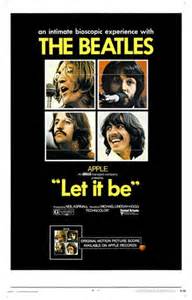 Then on January 9th, 1969, Paul arrived early at Twickenham Film Studios for what was the sixth day of filmed rehearsals for what became the “Let It Be” movie and soundtrack. He sat at the piano and ran through some recently written songs, such as “Let It Be,” “The Long And Winding Road” and what would eventually become an early post-Beatles hit entitled “Another Day.” Among these solo rehearsals was a quick run-through of “Her Majesty” on piano, this taking place before the other Beatles arrived. "However slight the song might be," Paul recalled in this 2021 book "The Lyrics," "I liked it, so I brought it to the session." Then on January 9th, 1969, Paul arrived early at Twickenham Film Studios for what was the sixth day of filmed rehearsals for what became the “Let It Be” movie and soundtrack. He sat at the piano and ran through some recently written songs, such as “Let It Be,” “The Long And Winding Road” and what would eventually become an early post-Beatles hit entitled “Another Day.” Among these solo rehearsals was a quick run-through of “Her Majesty” on piano, this taking place before the other Beatles arrived. "However slight the song might be," Paul recalled in this 2021 book "The Lyrics," "I liked it, so I brought it to the session."
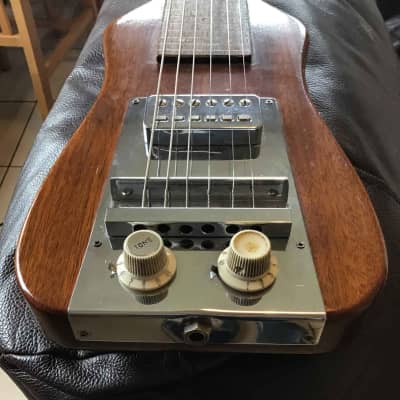 Then on January 24th, 1969, Paul ran through a two-minute version of the song in front of his band-mates in Apple Studios on Saville Row. This time Paul played it on acoustic guitar, repeating the same verse five times. While singing the song in falsetto a full octave higher than the released version, Paul sings some “doo, doo, doo” lyrics in verses two, four and five, while John also plays acoustic guitar, Ringo taps out an impromptu beat on drums and George doodles on a newly acquired Hofner Hawaiian lap-steel guitar, the same instrument John eventually plays on George's song “For You Blue.” George seems uninterested in the song, taking these couple of minutes to speak to Mal Evans about items he wants him to pick up and bring to the studio. From listening to this recording, it appears that Paul wasn't keen on including this song in the “Let It Be” project but was just goofing around to fill time, the song then being shelved for nearly six months. Then on January 24th, 1969, Paul ran through a two-minute version of the song in front of his band-mates in Apple Studios on Saville Row. This time Paul played it on acoustic guitar, repeating the same verse five times. While singing the song in falsetto a full octave higher than the released version, Paul sings some “doo, doo, doo” lyrics in verses two, four and five, while John also plays acoustic guitar, Ringo taps out an impromptu beat on drums and George doodles on a newly acquired Hofner Hawaiian lap-steel guitar, the same instrument John eventually plays on George's song “For You Blue.” George seems uninterested in the song, taking these couple of minutes to speak to Mal Evans about items he wants him to pick up and bring to the studio. From listening to this recording, it appears that Paul wasn't keen on including this song in the “Let It Be” project but was just goofing around to fill time, the song then being shelved for nearly six months.
 It was around three months later, however, that a decision was made to create a long medley that would take up one side of an album. A new final album, which was eventually titled “Abbey Road,” began being recorded on July 1st, 1969 (although recordings from earlier months did appear on the final album). “Interestingly,” engineer Geoff Emerick explains in his book “Here, There And Everywhere,” “it was at only the second session for the album that Paul, accompanying himself on acoustic guitar, recorded 'Her Majesty,' the song fragment that ended up concluding 'Abbey Road.'” It was around three months later, however, that a decision was made to create a long medley that would take up one side of an album. A new final album, which was eventually titled “Abbey Road,” began being recorded on July 1st, 1969 (although recordings from earlier months did appear on the final album). “Interestingly,” engineer Geoff Emerick explains in his book “Here, There And Everywhere,” “it was at only the second session for the album that Paul, accompanying himself on acoustic guitar, recorded 'Her Majesty,' the song fragment that ended up concluding 'Abbey Road.'”
 This day was July 2nd, 1969, Paul arriving at EMI Studio Two at 3 pm to start recording a track that would be a contender for the long medley. Mark Lewisohn, in his 1988 book “The Beatles Recording Sessions,” states: “One major advantage for Paul McCartney in living so close to EMI Studios was that he invariably arrived first for a session, strolling the short distance in no more than five minutes. This meant that he was often the first to start work. On this day, before the arrival of George and Ringo (John was hospitalized because of a car accident at the time), Paul used the solo studio time to record another of his very quick, spontaneous link-tracks: the 23-second 'Her Majesty.' A simpler recording could not be imagined: it took just three takes, only two of which were complete, before Paul had it right, singing live to his own acoustic guitar accompaniment, and using just two of the tape's eight available tracks. At the end of 'take three,' balance engineer Phil McDonald called over, 'Do you wanna hear it?' Paul replied 'Yeah,' went upstairs, heard a playback, liked what he heard, and 'Her Majesty' joined the list of songs for medley consideration.” This day was July 2nd, 1969, Paul arriving at EMI Studio Two at 3 pm to start recording a track that would be a contender for the long medley. Mark Lewisohn, in his 1988 book “The Beatles Recording Sessions,” states: “One major advantage for Paul McCartney in living so close to EMI Studios was that he invariably arrived first for a session, strolling the short distance in no more than five minutes. This meant that he was often the first to start work. On this day, before the arrival of George and Ringo (John was hospitalized because of a car accident at the time), Paul used the solo studio time to record another of his very quick, spontaneous link-tracks: the 23-second 'Her Majesty.' A simpler recording could not be imagined: it took just three takes, only two of which were complete, before Paul had it right, singing live to his own acoustic guitar accompaniment, and using just two of the tape's eight available tracks. At the end of 'take three,' balance engineer Phil McDonald called over, 'Do you wanna hear it?' Paul replied 'Yeah,' went upstairs, heard a playback, liked what he heard, and 'Her Majesty' joined the list of songs for medley consideration.”
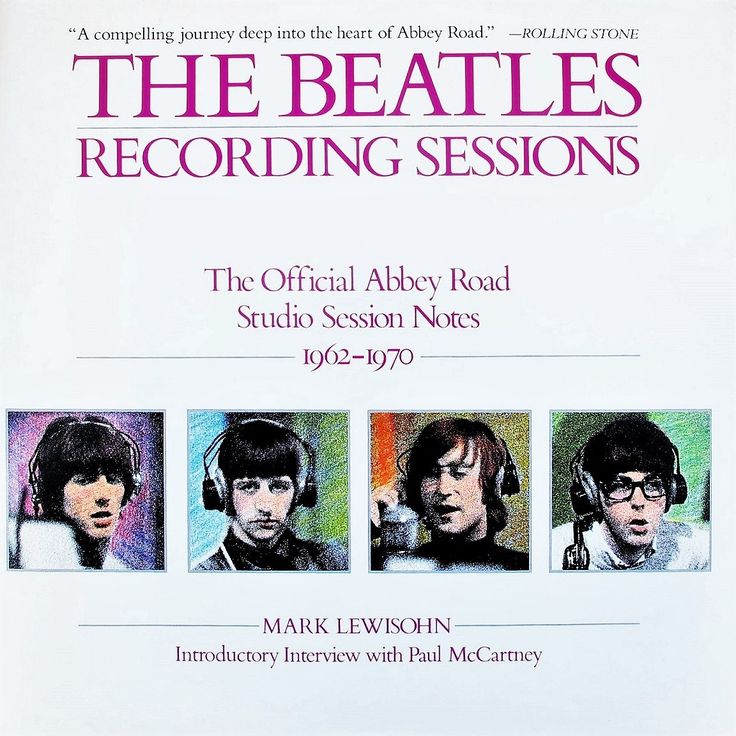 Chris Blair was recruited as 2nd engineer on this session, his second day in a row as tape operator for The Beatles. “They hadn't got a tape op,” he relates in the book “The Beatles Recording Sessions," "and Allan Stagge, then studio manager, called me to his office to ask if I might like to help out. He said that he wouldn't pressurize me into doing it. (This was a reference to the fact that several EMI engineers and tape operators no longer wanted to work with The Beatles, disliking the sometimes tense atmosphere between the group and the control room staff, 'the “us” and “them” situation,' as one engineer has called it.) I was extremely nervous on the session and my mind went completely blank. Paul sat down and did 'Her Majesty' and I couldn't for the life of me think how to spell 'Majesty' on the tape box. I rang upstairs, all around the building, asking people how to spell 'Majesty'!” Chris Blair was recruited as 2nd engineer on this session, his second day in a row as tape operator for The Beatles. “They hadn't got a tape op,” he relates in the book “The Beatles Recording Sessions," "and Allan Stagge, then studio manager, called me to his office to ask if I might like to help out. He said that he wouldn't pressurize me into doing it. (This was a reference to the fact that several EMI engineers and tape operators no longer wanted to work with The Beatles, disliking the sometimes tense atmosphere between the group and the control room staff, 'the “us” and “them” situation,' as one engineer has called it.) I was extremely nervous on the session and my mind went completely blank. Paul sat down and did 'Her Majesty' and I couldn't for the life of me think how to spell 'Majesty' on the tape box. I rang upstairs, all around the building, asking people how to spell 'Majesty'!”
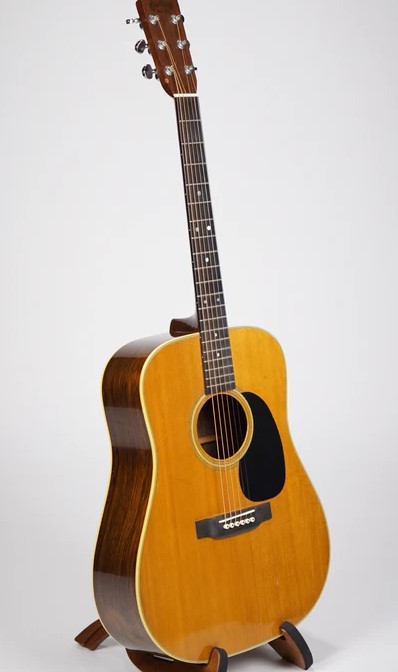 Nonetheless, Paul completed the song by approximately 4 pm. With Paul's Martin D-28 acoustic guitar on track one of the eight-track tape and his vocals on track eight, all three takes would have been acceptable for the finished product. After "take one," Paul states, 'Well, thank you ladies and gentlemen" in his best Elvis voice, moving quickly into "take two" after a false start and need to clear his throat. "Take three" was deemed best, all three takes being included in various "Abbey Road" 50th Anniversary editions. After George and Ringo arrived shortly thereafter, they dived headfirst into another composite McCartney composition entitled “Golden Slumbers,” this also being in the running for the long medley. The session finally ended at 9:30 pm. Nonetheless, Paul completed the song by approximately 4 pm. With Paul's Martin D-28 acoustic guitar on track one of the eight-track tape and his vocals on track eight, all three takes would have been acceptable for the finished product. After "take one," Paul states, 'Well, thank you ladies and gentlemen" in his best Elvis voice, moving quickly into "take two" after a false start and need to clear his throat. "Take three" was deemed best, all three takes being included in various "Abbey Road" 50th Anniversary editions. After George and Ringo arrived shortly thereafter, they dived headfirst into another composite McCartney composition entitled “Golden Slumbers,” this also being in the running for the long medley. The session finally ended at 9:30 pm.
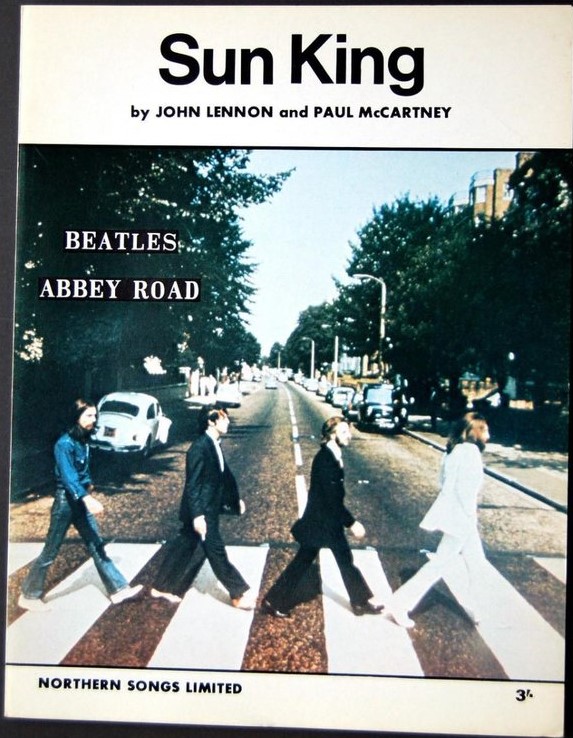 Meanwhile, with “Her Majesty” in the can, The Beatles began recording other “Abbey Road” songs, including other selections intended for the medley. One medley contender of note here is a recording entitled “Here Comes The Sun-King,” which actually comprised two of John's compositions eventually named “Sun King” and “Mean Mr. Mustard.” This recording was completely recorded during sessions held on July 24th and 25th, 1969 in EMI Studio Two, and July 29th, 1969 in EMI Studio Three. With John recovered from his auto accident by this time, all four Beatles appeared on this recording, the significance of these sessions being explained later. Meanwhile, with “Her Majesty” in the can, The Beatles began recording other “Abbey Road” songs, including other selections intended for the medley. One medley contender of note here is a recording entitled “Here Comes The Sun-King,” which actually comprised two of John's compositions eventually named “Sun King” and “Mean Mr. Mustard.” This recording was completely recorded during sessions held on July 24th and 25th, 1969 in EMI Studio Two, and July 29th, 1969 in EMI Studio Three. With John recovered from his auto accident by this time, all four Beatles appeared on this recording, the significance of these sessions being explained later.
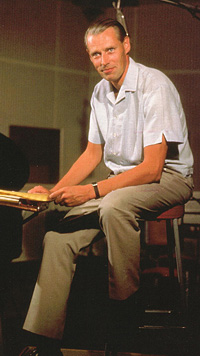 Having all of the medley segments nearly completed, a decision was made to create stereo mixes of all the components and then edit them together to see if they lined up properly for the finished album. This was done on July 30th, 1969 in the control room of EMI Studio Two, this mixing and editing session beginning at 10:30 pm after some last minute recording was done on some of the segments. Only one quick stereo mix was needed for “Her Majesty,” this being created by George Martin and engineers Geoff Emerick, Phil McDonald and John Kurlander. With a slight bit of reverb added, they gradually panned the guitar / vocal recording from the right to the left channel as the song progressed, the intention being to match up Paul's acoustic guitar with John's opening acoustic guitar chops of "Polythene Pam," which was also on the left channel. Having all of the medley segments nearly completed, a decision was made to create stereo mixes of all the components and then edit them together to see if they lined up properly for the finished album. This was done on July 30th, 1969 in the control room of EMI Studio Two, this mixing and editing session beginning at 10:30 pm after some last minute recording was done on some of the segments. Only one quick stereo mix was needed for “Her Majesty,” this being created by George Martin and engineers Geoff Emerick, Phil McDonald and John Kurlander. With a slight bit of reverb added, they gradually panned the guitar / vocal recording from the right to the left channel as the song progressed, the intention being to match up Paul's acoustic guitar with John's opening acoustic guitar chops of "Polythene Pam," which was also on the left channel.
 With this and the other medley segments mixed, the engineering team took to editing together all of these rough stereo mixes. However, at around midnight, an interesting event happened that was related by Geoff Emerick in “Here, There And Everywhere.” “While we were busy working, we had an unexpected visitor – a London (policeman). The local constabulary would regularly patrol the area around the studio because of the constant fan presence, and the EMI Security guards had gotten quite friendly with them. Occasionally, if there was a lull and we were down in Studio Two with The Beatles, we'd look up into the empty control room and see that (EMI staff member) John Skinner had brough one of the policemen by to have a look. We'd occasionally get a bit worried if joints were being passed around, but they were really just interested in getting a cup of tea and catching a glimpse of some famous pop stars. But on this night, the policeman happened to pop in on his own, unannounced, and I could see that it threw quite a scare into John, who'd already been the victim of a drug bust. He was trying to contain his nerves, but after the bobby left, Lennon gave Mal (Evans) a right bollocking: 'It's your job to keep people out of here!' he shouted at the hapless roadie.” With this and the other medley segments mixed, the engineering team took to editing together all of these rough stereo mixes. However, at around midnight, an interesting event happened that was related by Geoff Emerick in “Here, There And Everywhere.” “While we were busy working, we had an unexpected visitor – a London (policeman). The local constabulary would regularly patrol the area around the studio because of the constant fan presence, and the EMI Security guards had gotten quite friendly with them. Occasionally, if there was a lull and we were down in Studio Two with The Beatles, we'd look up into the empty control room and see that (EMI staff member) John Skinner had brough one of the policemen by to have a look. We'd occasionally get a bit worried if joints were being passed around, but they were really just interested in getting a cup of tea and catching a glimpse of some famous pop stars. But on this night, the policeman happened to pop in on his own, unannounced, and I could see that it threw quite a scare into John, who'd already been the victim of a drug bust. He was trying to contain his nerves, but after the bobby left, Lennon gave Mal (Evans) a right bollocking: 'It's your job to keep people out of here!' he shouted at the hapless roadie.”
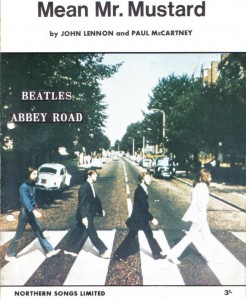 As the editing began, it was decided that the subdued piece “Her Majesty” would be inserted between the rocking “Mean Mr. Mustard” and “Polythene Pam,” due particularly to a reference in the former song of Mr. Mustard's "sister Pam" taking him "to look at the Queen," thereby linking all three of these songs lyrically. In “The Beatles Recording Sessions,” engineer John Kurlander explains: “We did all the remixes and crossfades to overlap the songs, Paul was there, and we heard it together for the first time. He said, 'I don't like “Her Majesty,” throw it away,' so I cut it out – but I accidentally left in the last note. He said, 'It's only a rough mix, it doesn't matter.' In other words, don't bother about making a clean edit because it's only a rough mix. I said to Paul, 'What shall I do with it?' 'Throw it away,' he replied. I'd been told never to throw anything away, so after he left I picked it up off the floor, put about 20 seconds of red leader tape before it, and stuck it onto the end of the edit tape.” As the editing began, it was decided that the subdued piece “Her Majesty” would be inserted between the rocking “Mean Mr. Mustard” and “Polythene Pam,” due particularly to a reference in the former song of Mr. Mustard's "sister Pam" taking him "to look at the Queen," thereby linking all three of these songs lyrically. In “The Beatles Recording Sessions,” engineer John Kurlander explains: “We did all the remixes and crossfades to overlap the songs, Paul was there, and we heard it together for the first time. He said, 'I don't like “Her Majesty,” throw it away,' so I cut it out – but I accidentally left in the last note. He said, 'It's only a rough mix, it doesn't matter.' In other words, don't bother about making a clean edit because it's only a rough mix. I said to Paul, 'What shall I do with it?' 'Throw it away,' he replied. I'd been told never to throw anything away, so after he left I picked it up off the floor, put about 20 seconds of red leader tape before it, and stuck it onto the end of the edit tape.”
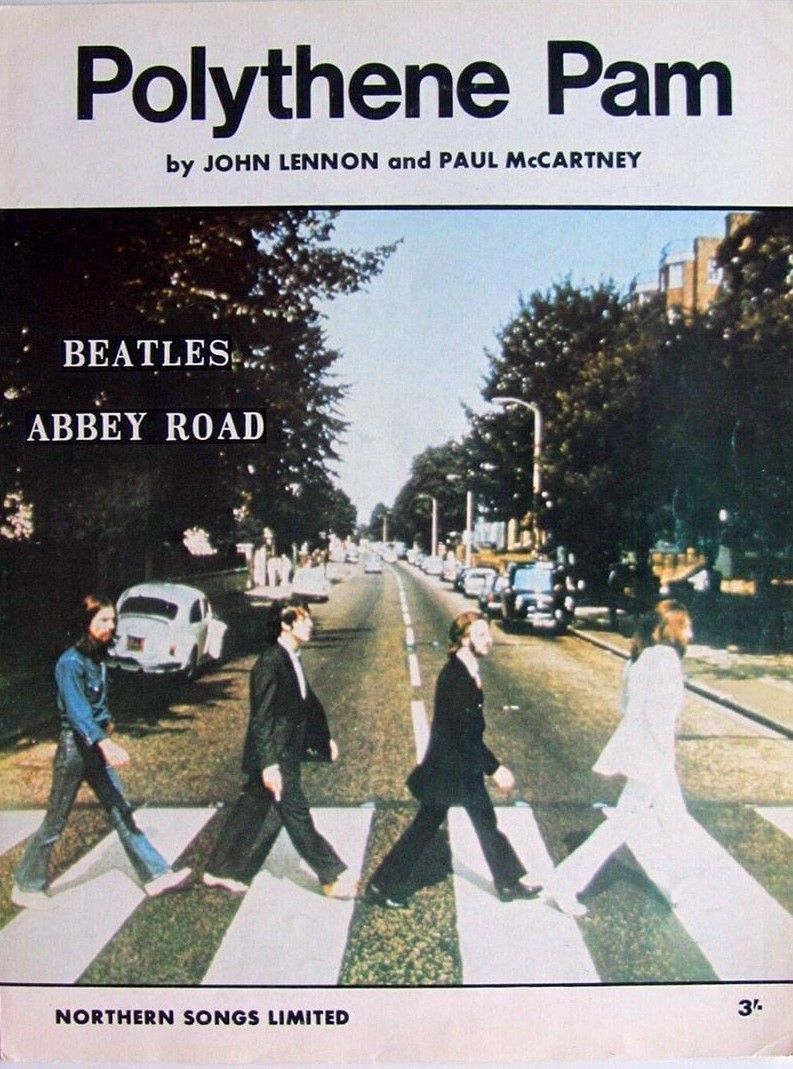 When John Kurlander cut out “Her Majesty” from this rough mix, a decision was made to also cut out the final crashing chord of “Mean Mr. Mustard” along with it in order create a suitable edit with what would then be the next track, “Polythene Pam.” Also, concerning the final acoustic guitar chord that Paul played on “Her Majesty,” author Mark Lewisohn explains that “it was left buried in this unreleased rough edit of the medley, at the beginning of 'Polythene Pam.'” With this final edit completed, all in attendance were somewhat satisfied that the medley would fit together properly when a final mixing and editing job would be done in the future. This trial edit can be heard in its entirity on various editions of 50th Anniversary "Abbey Road" release. At 2:30 am the following morning, this session was complete. When John Kurlander cut out “Her Majesty” from this rough mix, a decision was made to also cut out the final crashing chord of “Mean Mr. Mustard” along with it in order create a suitable edit with what would then be the next track, “Polythene Pam.” Also, concerning the final acoustic guitar chord that Paul played on “Her Majesty,” author Mark Lewisohn explains that “it was left buried in this unreleased rough edit of the medley, at the beginning of 'Polythene Pam.'” With this final edit completed, all in attendance were somewhat satisfied that the medley would fit together properly when a final mixing and editing job would be done in the future. This trial edit can be heard in its entirity on various editions of 50th Anniversary "Abbey Road" release. At 2:30 am the following morning, this session was complete.
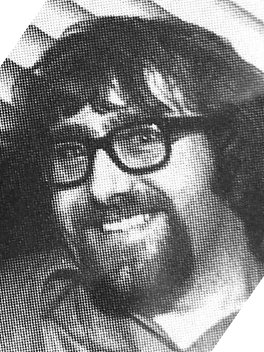 John Kurlander continues to explain about what transpired concerning the medley on the following day, July 31st, 1969: “The next day, down at Apple, Malcolm Davies cut a playback lacquer of the whole sequence (Mal Evans took the tape to Apple on 31 July, returning it to EMI on the same day) and, even though I'd written on the box that 'Her Majesty' was unwanted, he too thought, 'Well, mustn't throw anything away – I'll put it on at the end.' I'm only assuming this, but when Paul got that lacquer he must have liked hearing 'Her Majesty' tacked on the end. The Beatles always picked up on accidental things. It came as a nice little surprise there at the end, and he didn't mind. We never remixed 'Her Majesty' again, that was the mix which ended up on the finished LP." Therefore, the panning of the song from the right to the left channel remained intact, although there was no need to match it up with the left channel acoustic guitar work of John Lennon on "Polythene Pam" anymore. John Kurlander continues to explain about what transpired concerning the medley on the following day, July 31st, 1969: “The next day, down at Apple, Malcolm Davies cut a playback lacquer of the whole sequence (Mal Evans took the tape to Apple on 31 July, returning it to EMI on the same day) and, even though I'd written on the box that 'Her Majesty' was unwanted, he too thought, 'Well, mustn't throw anything away – I'll put it on at the end.' I'm only assuming this, but when Paul got that lacquer he must have liked hearing 'Her Majesty' tacked on the end. The Beatles always picked up on accidental things. It came as a nice little surprise there at the end, and he didn't mind. We never remixed 'Her Majesty' again, that was the mix which ended up on the finished LP." Therefore, the panning of the song from the right to the left channel remained intact, although there was no need to match it up with the left channel acoustic guitar work of John Lennon on "Polythene Pam" anymore.
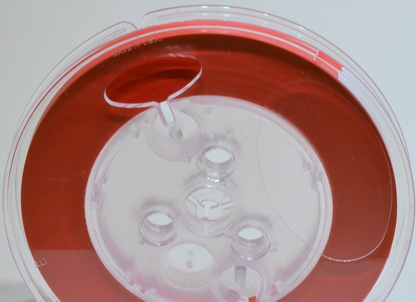 Geoff Emerick, in “Here, There And Everywhere,” gives additional insight, and some slight discrepancies, concerning this edit job, as well as Paul's reaction. “John (Kurlander)'s editing skills weren't quite up to snuff at that point, and he accidentally cut it one beat too early, on the last crashing note of 'Mustard.' He was about to correct the problem when a tired Paul said, 'Never mind, it's only a rough mix.' (John) Kurlander...stuck it onto the end of the test edit, after about twenty seconds of red leader tape. Red leader tape is used by engineers to mark the end of a song, but when Malcolm Davies cut the test lacquers at Apple the next day, he either missed seeing the leader tape fly by, or decided to include the song anyway, because he wasn't sure of our intent. Paul loved it!" Geoff Emerick, in “Here, There And Everywhere,” gives additional insight, and some slight discrepancies, concerning this edit job, as well as Paul's reaction. “John (Kurlander)'s editing skills weren't quite up to snuff at that point, and he accidentally cut it one beat too early, on the last crashing note of 'Mustard.' He was about to correct the problem when a tired Paul said, 'Never mind, it's only a rough mix.' (John) Kurlander...stuck it onto the end of the test edit, after about twenty seconds of red leader tape. Red leader tape is used by engineers to mark the end of a song, but when Malcolm Davies cut the test lacquers at Apple the next day, he either missed seeing the leader tape fly by, or decided to include the song anyway, because he wasn't sure of our intent. Paul loved it!"
 Geoff Emerick continues: "When it came time to sequence the final album, he insisted that we do it the same exact way, having 'Her Majesty' close the side after a twenty-second gap – similar to the bonus 'hidden' cuts that are sometimes included on today's CDs. The only thing Paul had us do was cut the very last note off. I guess he figured that since 'Her Majesty' was starting with the last note of 'Mean Mr. Mustard,' she might as well not have a last note of her own." In his book "The Lyrics," Paul remembers: "We didn't know where to place it. It was just by accident that it found its way onto the end of something, and we thought, 'Well, actually, that's a good idea.' It would be a nice little afterthought, a little irreverent look at the monarchy by a young man in his late twenties." Geoff Emerick continues: "When it came time to sequence the final album, he insisted that we do it the same exact way, having 'Her Majesty' close the side after a twenty-second gap – similar to the bonus 'hidden' cuts that are sometimes included on today's CDs. The only thing Paul had us do was cut the very last note off. I guess he figured that since 'Her Majesty' was starting with the last note of 'Mean Mr. Mustard,' she might as well not have a last note of her own." In his book "The Lyrics," Paul remembers: "We didn't know where to place it. It was just by accident that it found its way onto the end of something, and we thought, 'Well, actually, that's a good idea.' It would be a nice little afterthought, a little irreverent look at the monarchy by a young man in his late twenties."
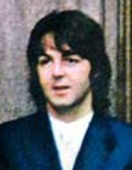 The above mentioned sequencing of the final album occurred on August 20th, 1969, which happened to be the last day that all four Beatles were in the recording studio at the same time. Interestingly, the intention on this day was to have the sides of the album reversed, which means that “Her Majesty” would have been the last track of side one instead of the final song of the entire “Abbey Road” album as we have come to know it. In any event, on this day, Paul insisted on tacking on the discarded “Her Majesty” from the rough mix of July 30th, 1969 onto the end of the long medley with 14 seconds of silence preceding it to simulate what he heard on the acetate disc created on July 31st. “That was very much how things happened,” he explained in his book “Many Years From Now.” “Really, you know, the whole of our career was like that so it's a fitting end." The above mentioned sequencing of the final album occurred on August 20th, 1969, which happened to be the last day that all four Beatles were in the recording studio at the same time. Interestingly, the intention on this day was to have the sides of the album reversed, which means that “Her Majesty” would have been the last track of side one instead of the final song of the entire “Abbey Road” album as we have come to know it. In any event, on this day, Paul insisted on tacking on the discarded “Her Majesty” from the rough mix of July 30th, 1969 onto the end of the long medley with 14 seconds of silence preceding it to simulate what he heard on the acetate disc created on July 31st. “That was very much how things happened,” he explained in his book “Many Years From Now.” “Really, you know, the whole of our career was like that so it's a fitting end."
 Sometime in 2019, George Martin's son Giles Martin, along with Sam Okell, returned to the master tapes of "Her Majesty" to create a vibrant new stereo mix of the entire "Abbey Road" album. In the process, they also thought to create a mix of all three takes of the song as recorded on July 2nd, 1969, including Paul's false start and clearing of the throat. The entire trial edit of the medley that was created on July 30th, 1969, affectionately refered to as "The Long One," was also mixed at that time, all of this being included on various editions of the 50th Anniversary "Abbey Road" release. Sometime in 2019, George Martin's son Giles Martin, along with Sam Okell, returned to the master tapes of "Her Majesty" to create a vibrant new stereo mix of the entire "Abbey Road" album. In the process, they also thought to create a mix of all three takes of the song as recorded on July 2nd, 1969, including Paul's false start and clearing of the throat. The entire trial edit of the medley that was created on July 30th, 1969, affectionately refered to as "The Long One," was also mixed at that time, all of this being included on various editions of the 50th Anniversary "Abbey Road" release.
Song Structure and Style
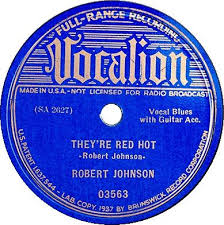 "Her Majesty" is composed in imitation of a structure used in '20s and '30s blues songs, such as "They're Red Hot" by Robert Johnson, as well as a "pub song the band hears after knocking off a day's work in the studio," as suggested by Tim Riley in his book "Tell Me Why." It only consists of one verse played simply on acoustic guitar and vocals, performed simultaneously by Paul, his defined finger-picking ability being on full display. "Her Majesty" is composed in imitation of a structure used in '20s and '30s blues songs, such as "They're Red Hot" by Robert Johnson, as well as a "pub song the band hears after knocking off a day's work in the studio," as suggested by Tim Riley in his book "Tell Me Why." It only consists of one verse played simply on acoustic guitar and vocals, performed simultaneously by Paul, his defined finger-picking ability being on full display.
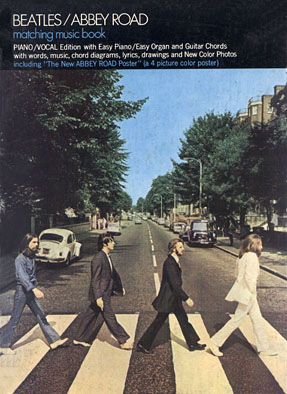 This verse, and therefore the entire song, is in 4/4 time and is eighteen measures in length, not counting the startling closing chord of “Mean Mr. Mustard” which, some may say, works as the song's introduction. The body of the song is contained within a standard sixteen measures with a two measure reprise tacked on at the end. This reprise repeats the final lyrical phrase “some day I'm gonna make her mine,” which fills the seventeenth measure. Only half of the eighteenth measure is actually heard because of the final dominant note being chopped off during an early editing job on the long medley. This verse, and therefore the entire song, is in 4/4 time and is eighteen measures in length, not counting the startling closing chord of “Mean Mr. Mustard” which, some may say, works as the song's introduction. The body of the song is contained within a standard sixteen measures with a two measure reprise tacked on at the end. This reprise repeats the final lyrical phrase “some day I'm gonna make her mine,” which fills the seventeenth measure. Only half of the eighteenth measure is actually heard because of the final dominant note being chopped off during an early editing job on the long medley.
 The song depicts the Queen Of England (or a girl he regards as a queen) as a shy but unpredictable woman who Paul is working up the nerve to ask out on a date. She “doesn't have a lot to say” and “changes from day to day” but, nonetheless, Paul is determined to make her his one day. First, though, he needs to consume “a belly full of wine” in order to lower his inhibitions and tell her that he loves her “a lot.” Go get her, Paul! The song depicts the Queen Of England (or a girl he regards as a queen) as a shy but unpredictable woman who Paul is working up the nerve to ask out on a date. She “doesn't have a lot to say” and “changes from day to day” but, nonetheless, Paul is determined to make her his one day. First, though, he needs to consume “a belly full of wine” in order to lower his inhibitions and tell her that he loves her “a lot.” Go get her, Paul!
American Releases
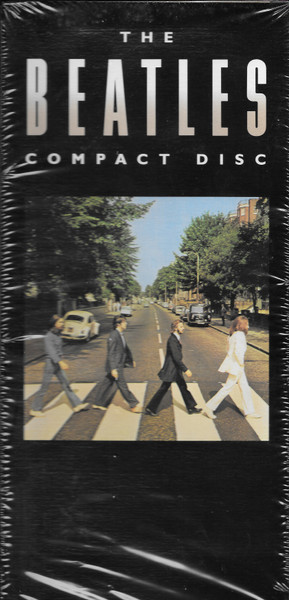 On October 1st, 1969, the final recorded Beatles album was released in America, simple titled "Abbey Road." "Her Majesty" is the eleventh track on side two of the album, although the first pressings fail to mention the existence of the track on either the label or album cover. The "Abbey Road" album took only three weeks to jump into the top spot on the Billboard album chart, raking in a total of eleven weeks in the #1 position. The album first appeared on compact disc on October 10th, 1987, and then as a remastered release on September 9th, 2009. A new CD and vinyl release of the album came out on September 27th, 2019 to celebrate its 50th Anniversary, this release containing a newly created stereo mix, not to mention an opaque green vinyl edition coming out on October 10th, 2025 as an exclusive release available only at Target Department Stores. On October 1st, 1969, the final recorded Beatles album was released in America, simple titled "Abbey Road." "Her Majesty" is the eleventh track on side two of the album, although the first pressings fail to mention the existence of the track on either the label or album cover. The "Abbey Road" album took only three weeks to jump into the top spot on the Billboard album chart, raking in a total of eleven weeks in the #1 position. The album first appeared on compact disc on October 10th, 1987, and then as a remastered release on September 9th, 2009. A new CD and vinyl release of the album came out on September 27th, 2019 to celebrate its 50th Anniversary, this release containing a newly created stereo mix, not to mention an opaque green vinyl edition coming out on October 10th, 2025 as an exclusive release available only at Target Department Stores.
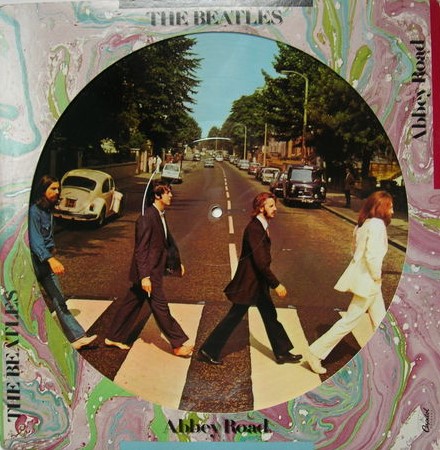 Sometime in 1978, Capitol re-released the “Abbey Road” album as a picture disc. Side one had the iconic front cover while side two contained a close-up of the wall photo of the back cover minus the song title listings. This release quickly went out of print but was re-released on September 27th, 2019 on 180-gram vinyl for the album's 50th Anniversary. Sometime in 1978, Capitol re-released the “Abbey Road” album as a picture disc. Side one had the iconic front cover while side two contained a close-up of the wall photo of the back cover minus the song title listings. This release quickly went out of print but was re-released on September 27th, 2019 on 180-gram vinyl for the album's 50th Anniversary.
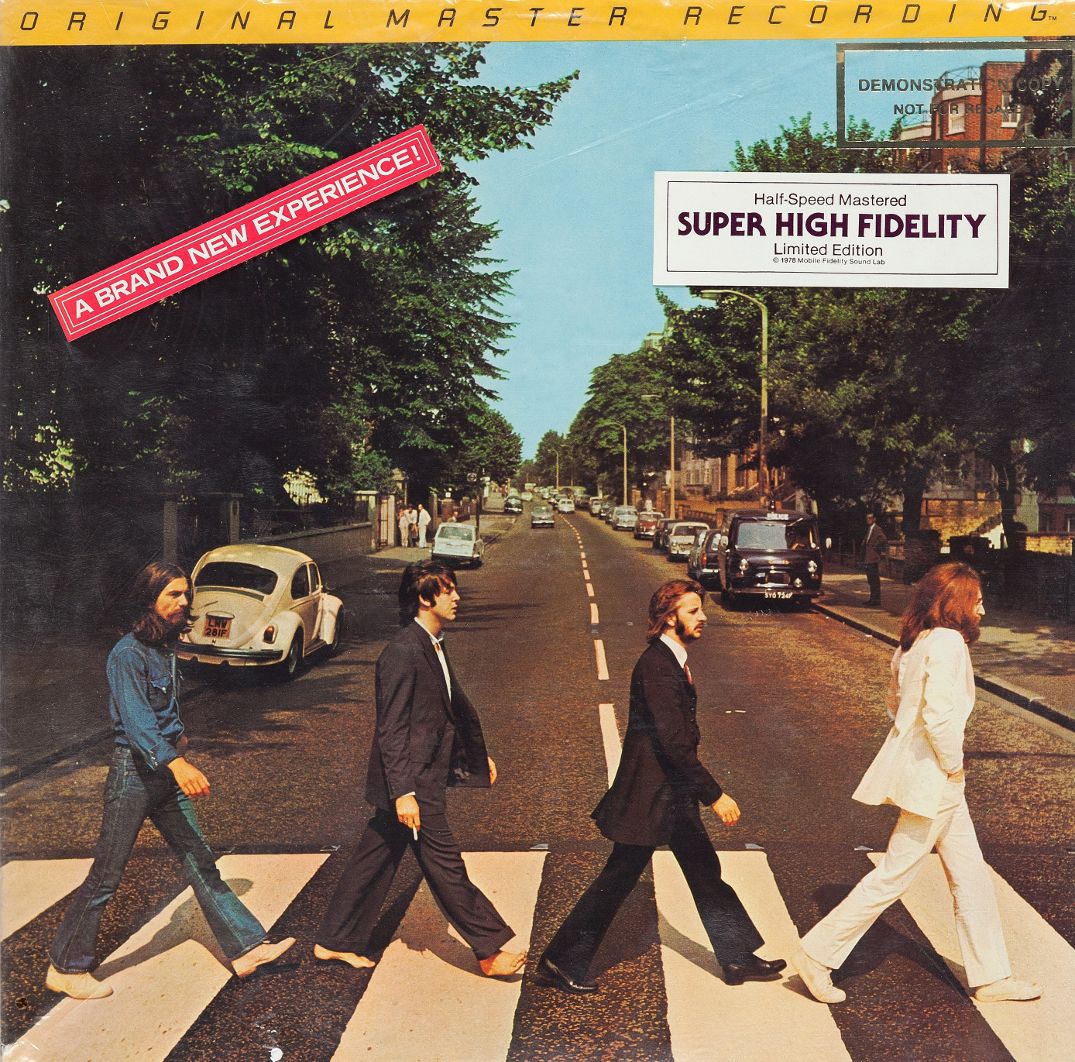 An interesting US vinyl edition of “Abbey Road” was released on December 28th, 1979, this being manufactured by Mobile Fidelity Sound Lab in Chatsworth, California as the first Beatles installment in their "Original Master Recording" series. Their practice was to prepare a new master utilizing half-speed mastering technology from the original master tapes, in this case using the leased sub-master from Capitol Records. Stickers on the shrinkwrap proclaimed this album as being “A Brand New Experience,” which proved to be the case. This version of the album sounded superior to all previous British and American pressings at that time. Unfortunately, this excellent edition of “Abbey Road” was only available for a short time and is quite collectible today. An interesting US vinyl edition of “Abbey Road” was released on December 28th, 1979, this being manufactured by Mobile Fidelity Sound Lab in Chatsworth, California as the first Beatles installment in their "Original Master Recording" series. Their practice was to prepare a new master utilizing half-speed mastering technology from the original master tapes, in this case using the leased sub-master from Capitol Records. Stickers on the shrinkwrap proclaimed this album as being “A Brand New Experience,” which proved to be the case. This version of the album sounded superior to all previous British and American pressings at that time. Unfortunately, this excellent edition of “Abbey Road” was only available for a short time and is quite collectible today.
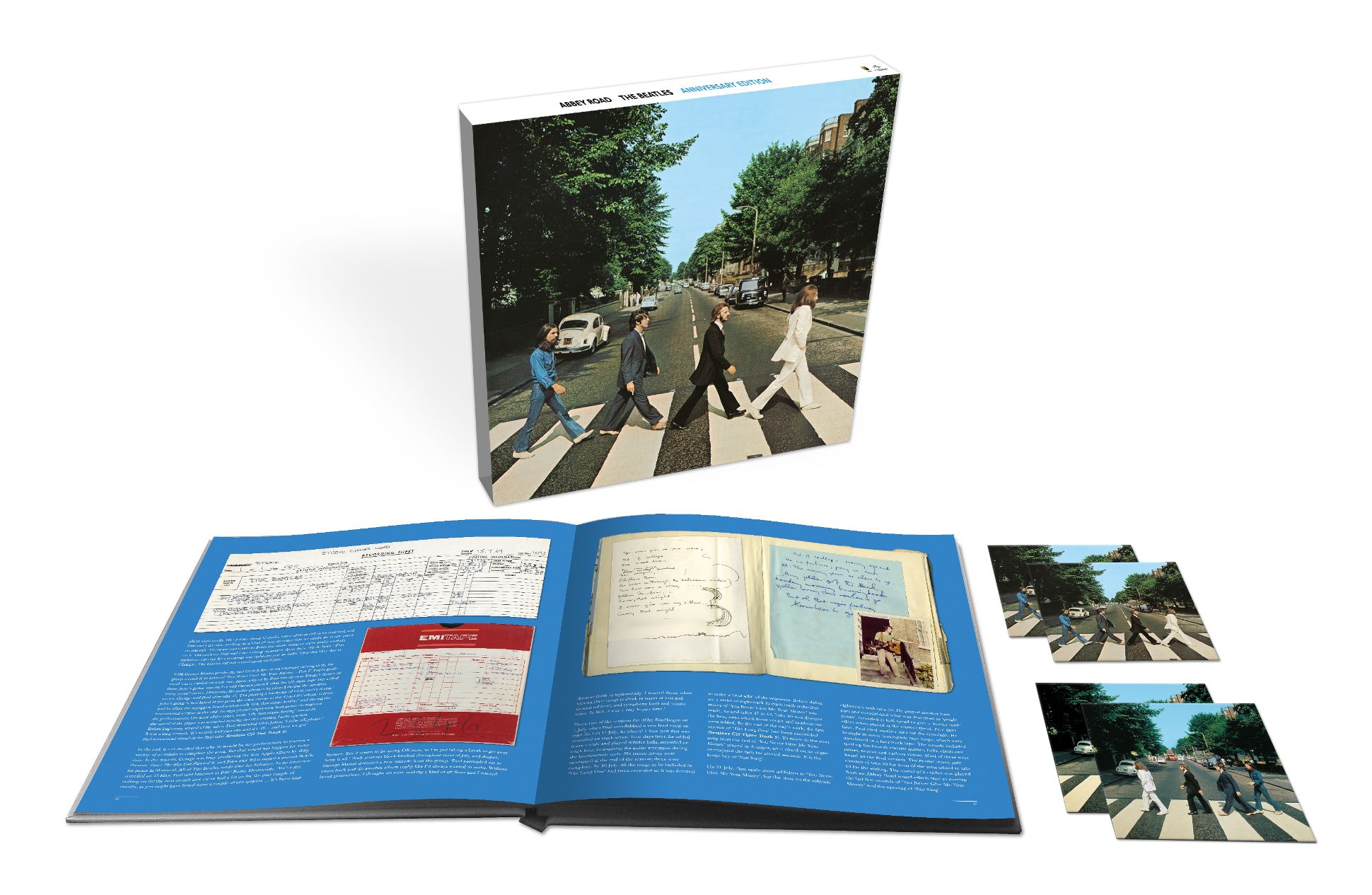 Also on September 27th, 2019, various editions of "Abbey Road" were released to commemorate its 50th Anniversary that featured interesting versions of "Her Majesty." The "Deluxe" edition, which was made available in a 2CD set, contains the newly created Giles Martin mix of the entire album as well as the never-before-heard 'takes' one through three from July 2nd, 1969. The "Triple Vinyl" album set and the "Super Deluxe" 3CD + Blu-ray edition also contain the entire trial mix of "The Long One" that was mixed on July 30th, 1969, which includes "Her Majesty" in between "Mean Mr. Mustard" and "Polythene Pam" as originally intended. Also on September 27th, 2019, various editions of "Abbey Road" were released to commemorate its 50th Anniversary that featured interesting versions of "Her Majesty." The "Deluxe" edition, which was made available in a 2CD set, contains the newly created Giles Martin mix of the entire album as well as the never-before-heard 'takes' one through three from July 2nd, 1969. The "Triple Vinyl" album set and the "Super Deluxe" 3CD + Blu-ray edition also contain the entire trial mix of "The Long One" that was mixed on July 30th, 1969, which includes "Her Majesty" in between "Mean Mr. Mustard" and "Polythene Pam" as originally intended.
Live Performances
Paul McCartney was one of many guest performers who played at "The Party At The Palace" at Buckingham Palace Garden in London on June 3rd, 2002. This event was in commemoration of the "Golden Jubilee of Queen Elizabeth II," Her Majesty herself being in attendance.
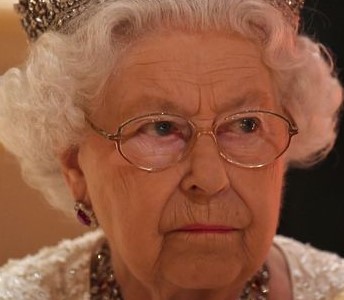 When introduced toward the end of the show, Paul's first act was to perform “Her Majesty,” replacing his finger-picking style with straight chords, undoubtedly because it had been so long since he had played it. After its conclusion, he stated, “I had to do it!” As the camera focused on the Queen, she didn't seem impressed. She undoubtedly had never heard the song before. "I did perform this song for the Queen," Paul recalled in his book "The Lyrics." "I don't know how to break this to you, but she didn't have a lot to say." When introduced toward the end of the show, Paul's first act was to perform “Her Majesty,” replacing his finger-picking style with straight chords, undoubtedly because it had been so long since he had played it. After its conclusion, he stated, “I had to do it!” As the camera focused on the Queen, she didn't seem impressed. She undoubtedly had never heard the song before. "I did perform this song for the Queen," Paul recalled in his book "The Lyrics." "I don't know how to break this to you, but she didn't have a lot to say."
Conclusion
After the world audience came to understand that "Abbey Road" was indeed the final Beatles album, and not "Let It Be" which was released seven-and-a-half months later, listening to the long medley on side two took on a more significant meaning. It appeared to many as if it was the group's final farewell message to their audience, complete with Paul's epilogue, "And in the end / the love you take / is equal to the love / you make."
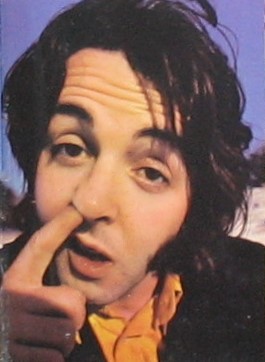 After this lyric is heard, which commonly is interpreted as bringing closure to the entire Beatles career, the medley ends in what Tim Riley describes in his book “Tell Me Why” as “a wash of orchestral luster,” which “sounded like uncharacteristic pomposity.” For anyone who might agree with this assessment, The Beatles instead, inadvertently, concluded their final album with a simple tongue-in-cheek aside entitled “Her Majesty” as if to say, “Here's a bit of silliness to show that we're not as 'full of ourselves' as you might think we are.” And with the last chord mysteriously missing, leaving a final dominant note unresolved, it left us all wanting more. After this lyric is heard, which commonly is interpreted as bringing closure to the entire Beatles career, the medley ends in what Tim Riley describes in his book “Tell Me Why” as “a wash of orchestral luster,” which “sounded like uncharacteristic pomposity.” For anyone who might agree with this assessment, The Beatles instead, inadvertently, concluded their final album with a simple tongue-in-cheek aside entitled “Her Majesty” as if to say, “Here's a bit of silliness to show that we're not as 'full of ourselves' as you might think we are.” And with the last chord mysteriously missing, leaving a final dominant note unresolved, it left us all wanting more.
Song Summary
“Her Majesty”
Written by: John Lennon / Paul McCartney
- Song Written: November, 1968
- Song Recorded: July 2, 1969 (“Mean Mr. Mustard”: July 24, 25 & 29, 1969)
- First US Release Date: October 1, 1969
- First US Album Release: Apple #SO-383 “Abbey Road”
- British Album Release: Apple #PCS 7088 “Abbey Road”
- US Single Release: n/a
- Highest Chart Position: n/a
- Length: :23
- Key: D major
- Producer: George Martin
- Engineers: Phil McDonald, Chris Blair (“Mean Mr. Mustard”: Geoff Emerick, John Kurlander)
Instrumentation (most likely):
- Paul McCartney - Vocals, Acoustic Guitar (1967 Martin D-28) Bass (1966 Fender Jazz Bass)
- John Lennon - Rhythm Guitar (1965 Epiphone ES-230TD Casino), Piano (1905 Steinway Vertegrand)
- George Harrison - Lead Guitar (1968 Fender Rosewood Telecaster)
- Ringo Starr - Drums (1968 Ludwig Hollywood Maple), tambourine
Written and compiled by Dave Rybaczewski
|
IF YOU WOULD LIKE TO MAKE A DONATION TO KEEP THIS WEBSITE UP AND RUNNING, PLEASE CLICK BELOW!
Sign Up Below for our MONTHLY BEATLES TRIVIA QUIZ!
|